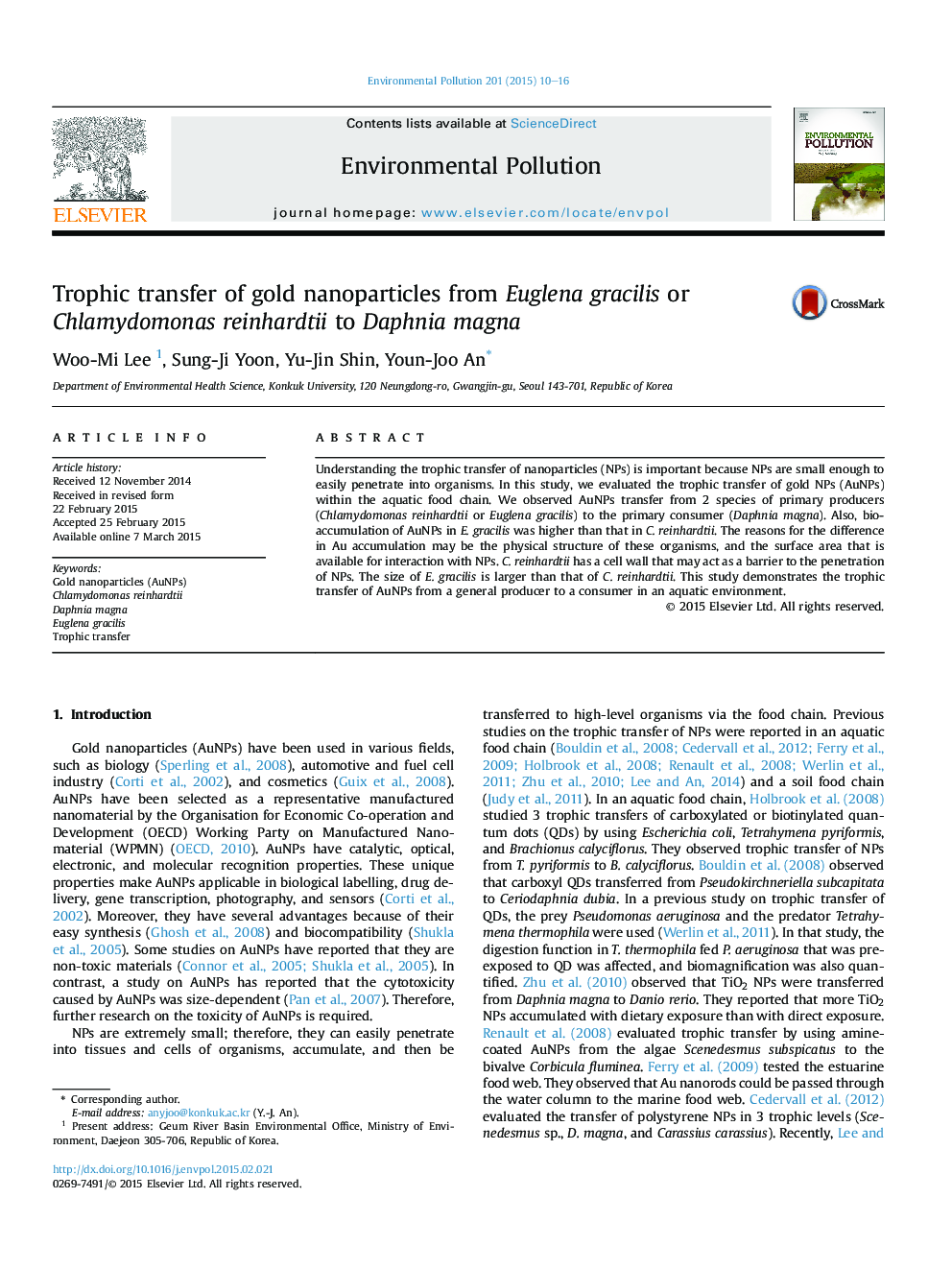| Article ID | Journal | Published Year | Pages | File Type |
|---|---|---|---|---|
| 6316712 | Environmental Pollution | 2015 | 7 Pages |
â¢This study evaluated the trophic transfer of AuNPs in an aquatic food chain.â¢Chlamydomonas reinhardtii and Euglena gracilis were selected as the primary producers.â¢Daphnia magna was used as the primary consumer.â¢The bioaccumulation of AuNPs in E. gracilis was higher than that in C. reinhardtii.â¢AuNPs were transferred from C. reinhardtii and E. gracilis to D. magna.
Understanding the trophic transfer of nanoparticles (NPs) is important because NPs are small enough to easily penetrate into organisms. In this study, we evaluated the trophic transfer of gold NPs (AuNPs) within the aquatic food chain. We observed AuNPs transfer from 2 species of primary producers (Chlamydomonas reinhardtii or Euglena gracilis) to the primary consumer (Daphnia magna). Also, bioaccumulation of AuNPs in E. gracilis was higher than that in C. reinhardtii. The reasons for the difference in Au accumulation may be the physical structure of these organisms, and the surface area that is available for interaction with NPs. C. reinhardtii has a cell wall that may act as a barrier to the penetration of NPs. The size of E. gracilis is larger than that of C. reinhardtii. This study demonstrates the trophic transfer of AuNPs from a general producer to a consumer in an aquatic environment.
Graphical abstractDownload full-size image
